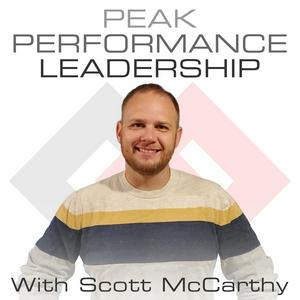Why Human Connection Wins in an AI World | Nick Smallman | Episode 358
Team engagement remains one of the most vital—and most challenging—aspects of modern leadership. In today’s hyper-digitized and rapidly evolving environment, leaders are inundated with data, obsessed with metrics, and often pressured to drive efficiency at all costs. Yet, despite technological advancements, the roots of high performance still reside in the fundamentals of human connection, trust, and meaningful teamwork. Modern leaders must balance analytics and process with the “soft skills” of conversation, emotional intelligence, and well-being. This episode delves into the why behind poor team engagement, the hidden human needs leaders often overlook, and the practical strategies that foster healthy, creative, and high-performing teams. Listeners will come away with insights into navigating the challenges of AI-driven change, sustaining genuine team connection, and shaping organizational cultures where people feel valued and secure.
Timestamped Overview
[00:05:31] Why Team Engagement Fails: Exploring causes behind ineffective team engagement and the role of overloaded data in leadership.[00:07:23] Metrics vs. Human Connection: The tension between KPIs and cultivating creative, functional teams.[00:09:04] Human Fallibility and Leadership: Why leaders know the value of teamwork but struggle to "walk the walk."[00:10:37] Crisis, Technology, and Change: Impact of financial crises and technological acceleration on leadership culture.[00:12:47] AI, Modernization, and Workforce Anxiety: Addressing fears around job security and adapting messaging as a leader.[00:14:59] Cognitive Agility and Overreliance on AI: Studies on ChatGPT’s effects, balancing efficiency with sustained mental engagement.[00:17:28] The Importance of Conversation: How dialog, brainstorming, and intellectual challenge enhance team performance and thinking.[00:18:40] Observing and Motivating Individuals: Practical ways leaders can notice team members, personalize engagement, and build trust.[00:20:12] Continuous Feedback vs. 360 Reviews: Why ongoing conversations outperform retrospective assessments in fast-paced environments.[00:21:47] Collective Intelligence in Teams: The essential roles of social sense-making and trust for outperforming technically superior but disconnected teams.[00:24:48] Storytelling and Motivation: Using ongoing narrative to inspire teams and move beyond past-focused feedback.[00:26:37] Building Organizational Culture: Cascading social well-being, connection, and trust from leadership throughout the organization.[00:30:51] Maslow’s Hierarchy Revisited: How modern workplace needs have shifted, with security and connection now key elements for younger generations.[00:35:39] Volunteering as the Ultimate Well-being Initiative: Research on what truly improves workplace happiness and engagement.[00:37:56] Four-Day Workweeks, Flexibility, and Trust: Assessing trends and best practices for organizational scheduling and respecting individuals’ real lives.[00:43:06] The Human Imperative in the Age of AI: Preserving connection, conversation, and true happiness in a rapidly digitizing world.[00:44:47] Ways to Follow Nick and Access Resources: Resources for further learning and professional development.
For the complete show notes be sure to check out our website:
https://leaddontboss.com/358



